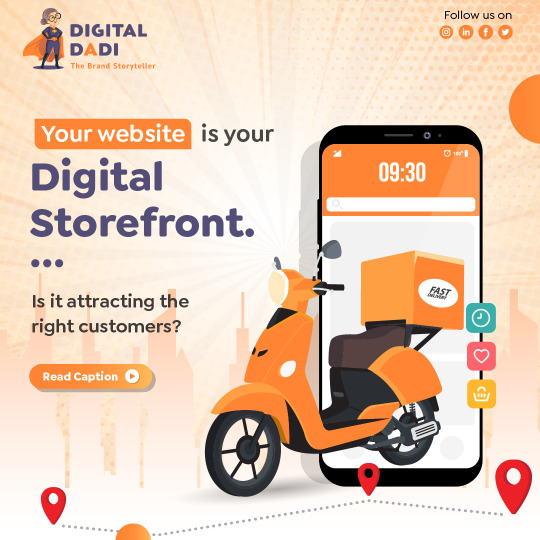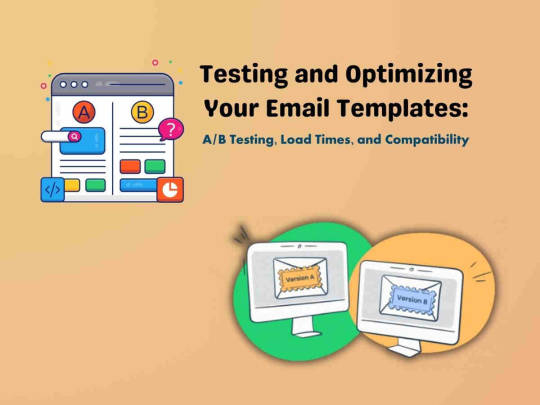#b2bmarketing
Text
A designer knows he has achieved perfection not when there is nothing left to add, but when there is nothing left to take away. (c)
Source glancingeye.com
#interior design#architecture#home decor#furniture#style#exterior design#outdoor design#outdoor#render#3d render#glancingeye#b2bmarketing#restaurant#beach bar#modelo3d#3d#3d art#cgi
7 notes
·
View notes
Text

Natural Essential Oil Explosive Salt Bath Bombs
#fashion#bath#bath bombs#bathfizzle#showersteamer#bathbombs#essential oils#essential spa#shower steamers#b2b services#bathfizzies#spa#b2bsales#b2b#b2bmarketing#ecommerce#supplier#manufacturer#bathbombsupplier
6 notes
·
View notes
Text
Key Role of Content Analysis in an SEO Audit

When it comes to strengthening the health of your website and boosting its visibility on search engines, conducting a thorough SEO audit is crucial. SEO audits dissect various aspects including the technical foundation of your website, backlink profiles, keyword optimization, and content quality. This blog will focus on the integral role that content analysis plays in an SEO audit.
Understanding Content Analysis in an SEO Audit
The role of content in the SEO world is to provide value to visitors and convey information to search engine algorithms. High-quality content translates into better user engagement and stronger indications of relevance to search engine bots, contributing to improved search rankings. In an SEO audit, content-analysis aims at checking for quality, relevance, organization, and optimization of the contents on your website.
Key Areas of Content Analysis
During an SEO audit, specific attention must be given to the following aspects of content analysis:
1. Content Quality
One of the principal areas for analysis, content quality involves assessing the uniqueness, depth, and value of your contents. Google highly favors original, in-depth content that delivers real value to users.
2. Keyword Usage
Proper keyword usage is vital for SEO. It involves assessing if your content is centered around relevant keywords but without stuffing them unnecessarily. Finding a balance is essential, as too few key phrases can make you invisible to search engines, while overuse could lead to penalties.
3. Meta Descriptions and Title Tags
Checking meta title and description optimization is crucial in content analysis. They should be effectively used to capture the essence of the content, include relevant keywords, and appeal to both users and search engine algorithms.
4. Image Optimization
Illustrations, infographics, and images should have appropriate alt text and file names. Large file sizes should avoided to prevent slow page load times, which can harm your SEO.
5. Internal and External Links
Anchor texts should optimized for SEO. And the links, both internal and external, should direct to high-quality, relevant sources. Broken or harmful links should identified and corrected.
Why Does Content Analysis Matter?
Content analysis is key to an SEO audit for the following reasons:
1. User Experience: High-quality, relevant, and well-structured content improves user experience, keeping visitors on your page longer and positively impacting your SEO.
2. Keyword Ranking: A thorough contents analysis ensures that your contents, appropriately optimized for relevant keywords. Helping you rank better in search engine result pages (SERPs).
3. Detecting Issues: Through contents analysis, you can identify and rectify problems like duplicate contents, poor keyword usage, missing meta tags, or improper use of images that could be hurting your SEO.
4. Competitive Edge: Regular content audits can help you stay ahead of your competition by constantly tuning your content strategy and aligning it with what works best for your audience and search engines.
In Conclusion
Content is the backbone of any website, and its health directly influences your SEO. Regularly conducting comprehensive contents analysis as part of your SEO audit can provide valuable insights to maintain high quality consistently, boost your SEO rankings, drive traffic, and provide the best possible experience to your users. Remember, while design can catch a visitor's eye, it is the substance in your content that turns them into customers.
#seo#socialstrategy#searchengineoptimization#growyourbusiness#b2bmarketing#brandawareness#prospectlistbuilding#b2bleads#contentstrategy#contentcreation
5 notes
·
View notes
Text
AI Unleashed: Transforming B2B Trends with a Dash of Silicon Humour!

#aib2baughs#techtalks#techtrends#siliconhumor#aiunleashed#techinnovation#humorousai#b2bindemand#b2b services#emailmarketing#leadgeneration#b2bsales#b2bmarketing#b2b lead generation#artificial intelligence#funnyclient#funny#funny memes#funny stuff#funny shit#funny post
4 notes
·
View notes
Text
Website Development Services | Website Design Company
Feeling like your website needs a wake-up call?
We're the web design experts who turn snoozy sites into customer magnets.
Let's chat!

#websitedesign#webdevelopment#uxui#landingpage#ecommerce#contentmarketing#leadgeneration#digitalmarketing#digitalmarketingservices#socialmedia#seo#ppc#b2bmarketing#usa#australia#ireland#unitedkingdom#itcompany#softwaretraining#edtech#digitaldadi#brandstoryteller
2 notes
·
View notes
Text

At BrandDirect B2B, we're pioneering a transformative journey within B2B marketing, navigating the complex terrain of innovation and impact. We serve as a guiding light of ambition, committed to sculpting groundbreaking B2B Demand Generation campaigns that set new benchmarks for excellence.
2 notes
·
View notes
Text
How important b2b lead generation for a business?
B2B lead generation is incredibly important for businesses, especially those operating in competitive markets. Here are several reasons why:
Revenue Generation: Leads are the lifeblood of any business. Without a consistent stream of leads, a business can struggle to generate revenue and grow. B2B lead generation helps in identifying potential customers who are interested in the products or services offered, which ultimately leads to sales and revenue.
Business Growth: Generating quality leads allows businesses to expand their customer base and grow their market share. By consistently attracting new leads and converting them into customers, businesses can expand their reach and increase their influence in the industry.
Relationship Building: B2B lead generation isn't just about making a sale; it's also about building relationships with potential clients. By nurturing leads through the sales funnel, businesses can establish trust and credibility, which are essential for long-term customer relationships and repeat business.
Brand Awareness: Lead generation activities, such as content marketing and social media engagement, can help increase brand visibility and awareness within the industry. Even if leads don't immediately convert into customers, they may still become familiar with the brand, making them more likely to consider it in the future.
Cost Efficiency: While lead generation requires an initial investment of time and resources, it can ultimately be more cost-effective than traditional marketing methods. By targeting specific audience segments and channels, businesses can optimize their lead generation efforts to generate high-quality leads at a lower cost per acquisition.
In conclusion, B2B lead generation is crucial for businesses looking to sustainably grow and thrive in competitive markets. It enables businesses to generate revenue, build relationships, gain insights, and maintain a competitive edge in their industry.
For more:
Please reach out here,
If you have any questions or talk any bit more about your need.

#b2b#b2bmarketing#b2b lead generation#b2bsales#b2b services#business growth#b2b sales#ecommerce#ecommerce business#generate b2b leads#list building#saas marketing#email list#founder
2 notes
·
View notes
Text
B2B lead generation refers to the process of identifying and attracting potential customers (leads) who are other businesses or organizations interested in the products or services offered by your company. This process is essential for B2B (business-to-business) companies to fill their sales pipelines and ultimately convert leads into paying customers.
Key components of B2B lead generation may include:
1. Identifying Target Audience: Understanding the specific businesses or organizations that are most likely to benefit from your products or services.
2. Creating Relevant Content: Developing content such as blog posts, whitepapers, case studies, webinars, and eBooks that address the pain points and interests of your target audience.
3. Utilizing Multiple Channels: Leveraging various channels such as email marketing, social media, search engine optimization (SEO), pay-per-click (PPC) advertising, content marketing, and networking to reach potential leads.
4. Lead Capture: Implementing strategies to capture information from leads who show interest in your offerings, such as through contact forms on your website, gated content, or attending webinars.
5. Lead Nurturing: Building relationships with leads over time by providing them with valuable information, personalized communication, and addressing their specific needs and concerns.
6. Scoring and Qualifying Leads: Evaluating and prioritizing leads based on their level of engagement, interest, and fit with your ideal customer profile.
7. Handing Off Qualified Leads to Sales: Once a lead reaches a certain level of engagement and qualification, they are passed on to the sales team for further follow-up and conversion into customers.
Overall, B2B lead generation is a systematic approach that requires a combination of targeted marketing efforts, effective communication strategies, and continuous optimization to generate high-quality leads and drive business growth.
#B2BLeadGen#LeadGeneration#B2BLeads#BizLeads#LeadGenStrategy#B2BMarketing#SalesLeads#LeadQualification#DemandGeneration#MarketingStrategy
2 notes
·
View notes
Text
4 notes
·
View notes
Text
dayhttps://demanday.com/how-demand-generation-will-help-transform-the-healthcare-industry/
#demanday#demandayb2b#digitalmarketing#leadgeneration#demandgeneration#b2bmarketing#b2b services#b2b lead generation#business growth
2 notes
·
View notes
Text
The Secret Sauce of Content Syndication: How to Supercharge Your Content Marketing Strategy
In the ever-evolving world of content marketing, content syndication emerges as a potent yet often overlooked secret weapon. Think of it like the final dash of spice that elevates your carefully crafted content to explosive new heights, reaching audiences beyond your immediate reach and amplifying your brand visibility.
Demanday Group: More than just a partner, an extension of your team.
2 notes
·
View notes
Text
Render. Source glancingeye.com

#interior design#architecture#home decor#furniture#style#exterior design#outdoor design#outdoor#render#3d render#glancingeye#b2bmarketing#restaurant#beach bar#modelo3d#3d#3d art#cgi#decor#interiors#interior decorating#interior#design#home decorating ideas#decorating#home decorating
3 notes
·
View notes
Text

Bath Soak Canned Body Scrub Cream Exfoliating Body Bath Salt
Our frosted cream bath salt moisturizes, extracts natural shea butter, uses a gentle formula. Rich foam makes your skin more refreshing.
#fashion#bath#bath bombs#bathfizzle#showersteamer#bathbombs#essential oils#essential spa#shower steamers#b2b services#b2bsales#b2bmarketing#b2b#bathbombs supplier#supplier#manufacturers#bathscrub#bath salts
4 notes
·
View notes
Text
Testing and Optimizing Your Email Templates: A/B Testing, Load Times, and Compatibility

In an era where email marketing is more important than ever, a well-crafted email template is crucial in delivering your message effectively and driving conversions. However, to achieve the best results, simply creating an aesthetically pleasing or content-rich email template isn't enough — it needs to be optimized through thorough testing. In this blog, we will explore how to test and optimize your email templates through A/B testing, checking load times, and ensuring compatibility.
A/B Testing Your Email Templates
A/B testing, also known as split testing, involves creating two different versions of an email to see which performs better. Here's how you can implement it:
Identify a component of your email you wish to test. This could be the subject line, email copy, call-to-action, or design elements like colors and font size.
Send one variant to a subset of your email list and the other variant to another subset. Ensure that variables such as sending time and day are the same to maintain testing accuracy.
Analyze the results based on your key performance indicators, such as open rate, click-through rate, and conversion rate.
A/B testing offers insights into your audience preferences and helps to continuously improve and optimize your emails based on empirical evidence.
Checking Load Times
If your email takes too long to load, readers are likely to close it before even viewing its content. Here's how you can optimize load times:
Image Optimization: Use compressed images with smaller file sizes. Services like TinyPNG can help reduce image sizes without compromising quality.
Simplifying HTML: Excessive or messy HTML coding can also extend load times. Ensure your code is clean, minimalist, and efficient.
Limiting Content: Although it’s important to provide valuable content, too much text or too many images can impact load times.
Remember, the quicker an email loads, the more likely the recipient is to engage with its content.
Ensuring Compatibility
With a variety of email clients, devices, and screen sizes in use by your email list, ensuring compatibility is crucial. Here's how you can do it:
Mobile Optimization: A large portion of emails are opened on mobile devices. Therefore, your template should be responsive, with content that resizes and reorders itself for smaller screens.
Multi-client Compatibility: Test your template across different email clients (like Gmail, Outlook, Apple Mail, etc.) to ensure it displays properly. Tools like Litmus can help with this.
Include a 'View in Web Browser' link: This allows users who experience issues viewing your email in their client to view it directly in their web browser.
It's crucial that everyone on your email list can view and interact with your email correctly to deliver a consistent experience.
Conclusion
Successful email marketing relies heavily on the effectiveness of your email templates. By A/B testing your emails, optimizing load times, and ensuring compatibility across devices and email clients, you can dramatically improve the success of your email campaigns. Remember, persistently testing, learning, and optimizing is the key to success in any email marketing strategy.
#socialstrategy#seo#email templates#email marketing#cold email outreach#prospectlistbuilding#b2bmarketing#brandawareness
2 notes
·
View notes
Text
From Snooze to Sales-palooza: Unleash Your Sales and Lead Generation Superpowers!
Article by Jonathan Bomser | CEO | AccountSend.com

Are you ready to witness a business growth explosion like never before? Get ready to strap on your rocket boots because we're about to reveal a treasure trove of proven sales and lead generation strategies that will take your business to the next level! In this upbeat and motivating blog, we'll provide you with a roadmap to success, sharing the strategies and steps you need to skyrocket your business growth. So, let's dive in, buckle up, and prepare for lift-off!
DOWNLOAD SALES-PALOOZA INFOGRAPHIC
Checklist for Sales Success:
Know Your Target Audience:
To hit the bullseye, you need to know your target audience inside out. Identify their pain points, desires, and motivations. Conduct market research and create detailed buyer personas. Understanding your audience will help you tailor your sales and lead generation strategies to resonate with their needs.
Craft an Irresistible Value Proposition:
Your value proposition is the secret sauce that sets you apart from the competition. Clearly communicate the unique benefits your products or services offer. Highlight how you can solve your customers' problems or meet their desires better than anyone else. Craft a compelling value proposition that leaves a lasting impression.
Build a Stellar Sales Team:
Your sales team is the backbone of your business growth. Hire talented individuals who are passionate, motivated, and customer-centric. Provide them with proper training and equip them with the right tools and resources to succeed. Foster a positive and supportive team culture that celebrates wins and encourages continuous improvement.
Leverage the Power of Inbound Marketing:
Inbound marketing is like a magnet that attracts qualified leads to your business. Create valuable and educational content that addresses your audience's pain points and provides solutions. Optimize your website for search engines and use lead capture forms to convert visitors into leads. Nurture those leads with personalized email campaigns and build relationships based on trust and value.
Embrace the Magic of Social Selling:
Social media is not just for posting cute cat videos; it's a goldmine for sales and lead generation. Engage with your audience on platforms like LinkedIn, Twitter, and Facebook. Share valuable content, participate in industry discussions, and connect with potential customers. Build relationships and establish yourself as a trusted authority in your field.
Develop Strategic Partnerships:
Collaborating with strategic partners can open doors to new opportunities and expand your reach. Identify businesses that complement your offerings and create mutually beneficial partnerships. Pool your resources, cross-promote each other, or offer joint packages to attract a wider audience. Strategic partnerships can supercharge your lead generation efforts and lead to exponential growth.
youtube
Harness the Power of Customer Referrals:
Word-of-mouth is a powerful force in sales. Encourage your satisfied customers to refer their friends, family, and colleagues to your business. Offer incentives or referral programs to motivate them. Delight your customers with exceptional service and create memorable experiences. Happy customers will become brand advocates, generating a steady stream of new leads.
Constantly Measure, Analyze, and Optimize:
To achieve sales success, you must continuously measure your performance and analyze the data. Track key metrics like conversion rates, customer acquisition costs, and lifetime value. Identify areas for improvement and optimize your sales and lead generation strategies accordingly. Embrace a data-driven mindset to refine your approach and achieve even greater results.
You now have a roadmap to ignite your business growth using proven sales and lead generation strategies. By following this checklist and implementing these strategies, you'll be well on your way to achieving sales success and skyrocketing your business to new heights. So, buckle up, take action, and get ready to witness your business soar to unimaginable levels of success. The sky's the limit!
#Youtube#marketing#database#lead generation#b2bmarketing#b2bemaillists#business to business#social media#salesfunnel#startup
10 notes
·
View notes